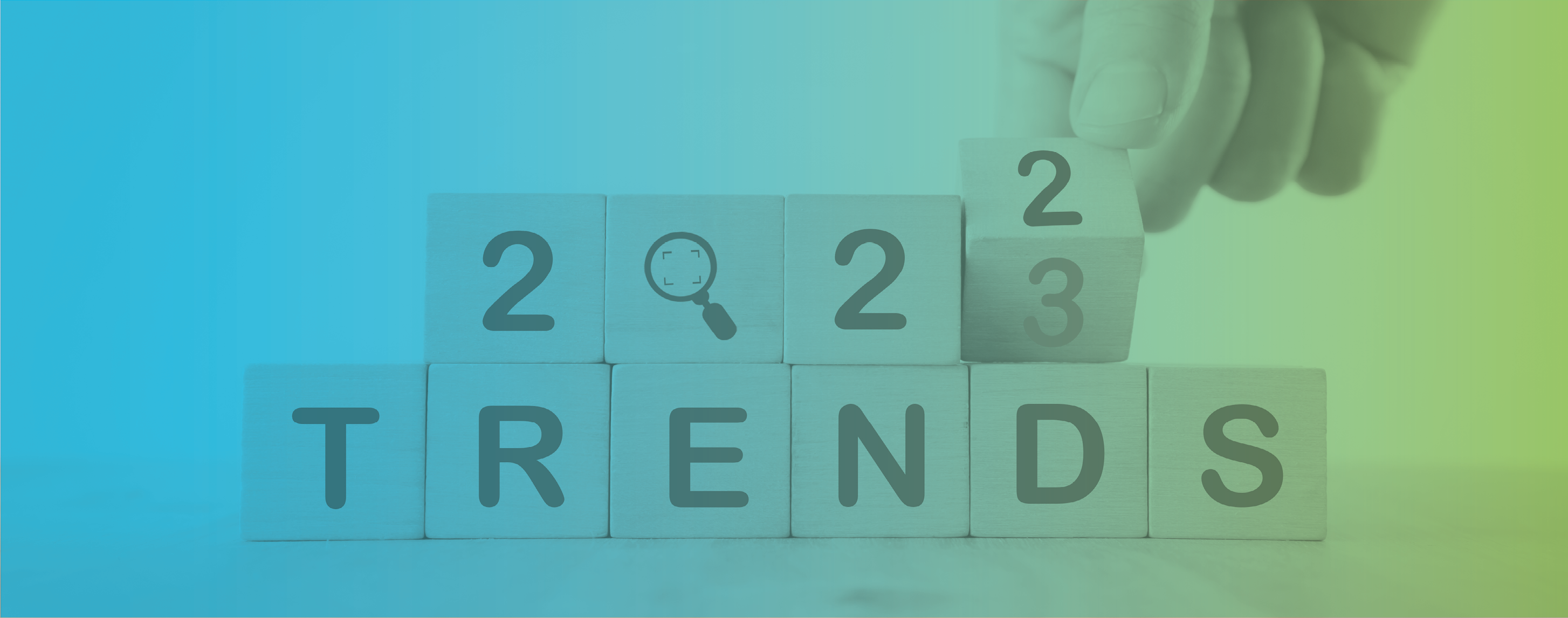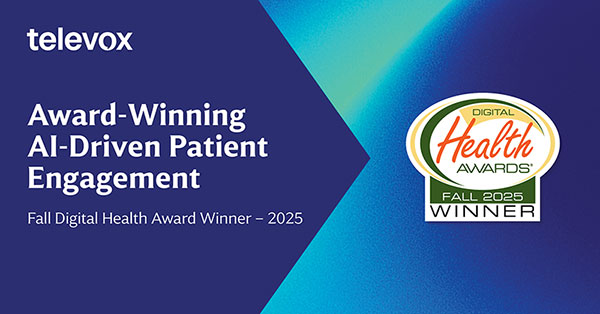Televox is proud to announce that its Enterprise Edition SMS solution has been awarded Gold…

3 Health IT Trends for 2023 that are Transforming Patient Activation and Engagement
By: Don Thompson, Head of Marketing at TeleVox
We will see plenty of innovation, technological advancement, and new tools come to the table in 2023 – but three trends will be especially impactful when it comes to patient activation strategies. These include patient engagement communications and healthcare-related outreach that encourages patients to seek care, improves outcomes, and drives revenue for healthcare organizations.
Trend 1: Healthcare Consumerism is Shaping Patient Activation Communications and Care Delivery
Patients are demanding a more retail-like healthcare experience akin to their interactions with other industries and services. These individuals want “shoppable” care, personalized interactions, and convenient tools to connect with healthcare organizations (like scheduling doctor’s appointments online).
Consumerism in healthcare has prompted innovation and improvement across the healthcare industry, benefitting patients, providers, and payers alike. For example, price transparency technology has made it easier for patients to access quality, affordable care. And tools like online check-in or pre-registration have eased healthcare teams’ administrative workload, while offering patients the opportunity to complete paperwork on their own time, rather than in a waiting room.
Perhaps most importantly, healthcare consumerism has underscored the importance of putting care decisions into patients’ hands. This makes sense given that the responsibility for paying for and managing one’s own care lies with the patient.
At TeleVox, our core patient engagement platform lives within the electronic health record (EHR) system which makes personalized patient outreach easier than ever. Workflows as simple as appointment reminders and as time-consuming as referral management rely on the information stored in the EHR, including patient personalization settings like language and communication preferences. Plus, this seamless interaction with the EHR enables capabilities that give patients the power to take charge of their care. This includes self-service features like text-based appointment scheduling and rescheduling that don’t require patients to call into an office, wait on hold, and play phone-tag just to confirm a visit with their doctor.
Trend 2: Telehealth, Retail Clinics, and “Care Anywhere” are Here to Stay
The COVID-19 pandemic accelerated care delivery via telehealth and also popularized “care anywhere,” inclusive of retail clinics, pharmacies, and other settings (virtual and in-person). In the retail sector, giants like CVS and Walmart have shared aggressive growth plans to meet consumer demand for more accessible care at alternative locations and at more affordable costs. Walgreens even projected that its U.S. healthcare businesses will grow from $2 billion to $12 billion by 2025.
Growing acceptance and availability of non-traditional care sites have made healthcare services more accessible to many. This “care anywhere” strategy is placing demand on providers and care delivery organizations to adjust some of their traditional patient activation tactics. For example, innovations like digital therapeutics (technology that delivers medical interventions to patients ranging from simple, behavior-modifying reminders to implantable monitoring devices) rely heavily on interactive, mobile-based messaging with patients. Areas of treatment utilizing digital therapeutics have the potential to lower healthcare costs, improve patient outcomes, streamline access to care, and are available on a 24/7 basis.
More variance across multiple care sites means it’s more important than ever for healthcare organizations to communicate with their patients in ways that complement these non-traditional venues. Thankfully, patient engagement automation from TeleVox offers omnichannel, digital outreach so that hospitals and health systems can use the channels that feel most comfortable (and convenient) to their patients. For many, texting is the preferred channel given it’s easy to respond and react to asynchronously. But some individuals may prefer email or traditional phone communication—making it important to partner with a patient engagement technology vendor that offers flexible, customizable communication.
Trend 3: Automated, Autonomous Operations Can Compensate for Workforce Challenges
The healthcare industry is seeing more automated workflow tools available than ever before, yet it remains slow to adopt some of these time-saving solutions. In 2023, it’s time to eliminate unnecessary, manual, repetitive work, especially given the increasing employee burnout among physicians, other clinicians, and healthcare support staff. In fact, the Association of American Medical Colleges predicts that physician demand will exceed supply this year, leading to a shortage between 54,000 and 139,000 physicians (placing an increased burden on support staff). Hospitals and health systems must seek out solutions that close the gap between staff shortages and demand.
One culprit taking up unnecessary time from already-strapped healthcare teams is administrative work. This can include data entry, filing digital documents, and other repetitive work. One study found that the average employee spends 60 hours per month on easily automatable tasks. In healthcare, administrative to-dos required for effective patient activation can be unnecessarily tedious. Consider, for example, the manual steps associated with picking up the phone to remind people of their appointments, play phone tag with hard-to-reach patients, or conduct recall when individuals are due for preventive screenings or vaccinations.
As staffing shortages persist in our industry, healthcare organizations that want to stay afloat must address and automate these traditionally manual processes. For instance, a recent MGMA survey found that up to 84% of patients are still scheduling care with the front desk. This is in stark contrast to other industries like hospitality, where hotel and dinner reservations are frequently made online and via mobile apps.
TeleVox can give your organization time back. Our platform offers fully automated, end-to-end workflows that streamline communications for everything from recommended screenings and overdue annual physicals to specialty referrals, eliminating the need for healthcare teams to pick up the phone.
What’s next?
If your hospital wants to stay ahead of these trends, we can help. Reach out to our team today to discuss how TeleVox can ensure your communications result in patient activation that drives revenue for your organization, all without burdening your staff members.



